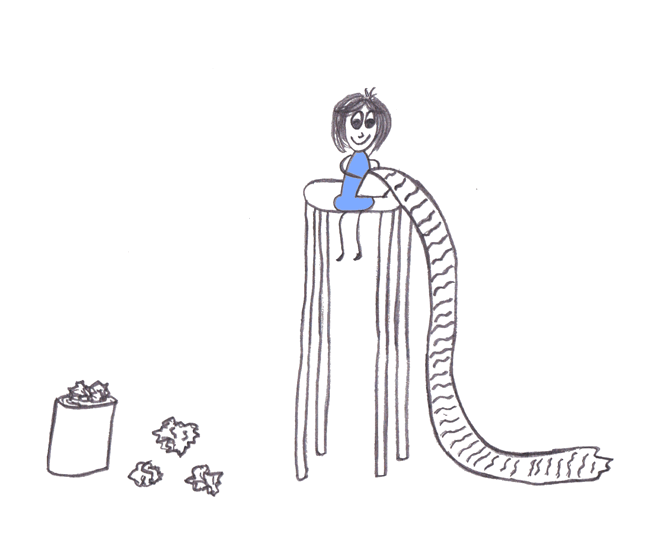... doing things that are important, but not urgent

Think for a minute, how often you do you ask yourself if something you are doing is important? Would it make a positive impact in your professional or personal life?
I’ve found that I don’t ask myself these kinds of questions often enough. I just flow on the current and allow circumstances to decide for me what, when, and how to do things.
Stephen R. Covey’s book “The 7 Habits of Highly Effective People” made me think about the importance of activities that I am doing in my personal and professional life.
The third habit in the book is “put first things first”.
A time management matrix from this book will help you to organize and execute your priorities.

Urgent
Urgent matters are usually visible. They press on us; they insist on action. They’re usually right in front of us. And often they are pleasant, easy, and fun to do. But so often they are unimportant!
Important
Importance, on the other hand, has to do with results. If something is important, it contributes to your mission, your values, and your high priority goals.
“Not urgent” and “not important” are the opposites of “urgent” and “important”. “Not important” has nothing to do with results. We do it because we don’t have a clear idea of what is important.
Let’s look at four Quadrants.
Quadrant 1: Urgent and Important
It deals with significant results that require immediate attention. We usually call the activities in Quadrant 1 “crises“ or “problems“.
Quadrant 1 is all about deadline-driven projects. People, who spend most of their time in this Quadrant often escape to Quadrant 4, which is not important and not urgent. These people work and live on fire almost all the time. Spending a lot of time in this quadrant is very stressful and unhealthy.
Quadrant 3: Urgent and Not important
There are other people who spend a great deal of time in “urgent, but not important” Quadrant 3, thinking they’re in Quadrant 1. They spend most of their time reacting to things that are urgent, assuming they are also important. But the reality is that the urgency of these matters is often based on the priorities and expectations of others.
Quadrant 4: Not urgent and Not important
People who spend time almost exclusively in Quadrants 3 and 4 basically lead irresponsible lives.
It doesn’t sound very attractive, to be an irresponsible person, does it?
Effective people stay out of Quadrant 3 and 4 because, urgent or not, they aren’t important. They also shrink Quadrant 1 down to size by spending more time in Quadrant 2.
This sounds much better.
Quadrant 2: Not urgent and Important
Quadrant 2 is the heart of effective personal management. It deals with things that are not urgent, but are important. It deals with things like building relationships, long-range planning, exercising, and maintenance - all those things we know we need to do, but somehow seldom get around to doing, because they aren’t urgent.
I was curious as to how we can as UX Designers, apply this matrix and become effective at what we do.
The key is not to prioritize what’s on your schedule, but to schedule your priorities.
S.R. Covey shared four key activities that help to organize your schedule. I took them as a base for organizing our work day as UX Designers.
Identify Roles
The first thing is to identify your main roles for a particular project. It can be just one more project at work, freelance project, volunteer project, etc. Think of what kind of roles you will need to play for this project. It can be researcher, interviewer, project manager, graphic designer, interaction designer, wireframes designer, etc. Write them down.
Selecting Goals
Now, write down one or two important goals that you need to accomplish for each role. Be critical and try to think just about important results; results, that will move you forward with your project. For instance, think about how many interviews you should do in order to gather necessary information; should you create a survey? How many people should participate on survey? And so on.
Scheduling
The next step is to plan your time. Think about how much time you will need to achieve every goal for each role. Schedule it in your calendar. For example, if you decided that you need to have five interviews, think about how much time you are going to need for that.
S.R. Covey recommends that you schedule your weeks instead of days. This is something that you may consider doing. If so, you can read more about this in the Habit 3 session in “The 7 Habits of Highly Effective People”.
Daily Adapting
Every day take a few minutes to think about your day, set priorities, and make sure that you focus on the right things. Delete everything from your schedule that is not aligned with your goals.
The reason you need to prioritize your activities in the last stages, instead of the first, is because at this moment you already have your base. You already know about your roles, your goals, and how much time you need for this. Now, when you set priorities you know that your activities are important, because they will provide positive results in achieving your goals.
If I had to choose just one thing that I wish you could remember it would be always asking yourself:
If something you are doing will make a tremendous positive difference in your professional/personal life?
Adapt this question and ask it every time when you work on a project as a UX Designer or developing yourself. Stop for a minute and think.
My question to you:
Right now, are you doing something that will make a tremendous positive impact in your life?